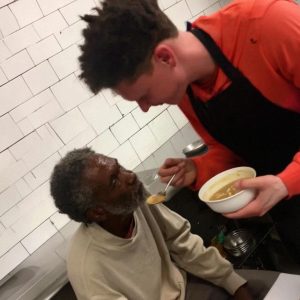A young boy was born with a rare and challenging condition that severely affected his early life. He suffered from Crouzon syndrome, a genetic disorder that caused his skull bones to fuse too early, leading to unusual facial and cranial structures. His eye sockets were unusually small, giving him bulging eyes, while his skull had an abnormal shape. Everyday activities were difficult: he struggled to breathe properly, his vision was deteriorating, and the deformities made normal social interaction a challenge. His parents watched helplessly as their child faced a combination of medical and emotional hardships, hoping that modern medicine could offer a solution.
The doctors assessed the boy’s condition carefully, recognizing the urgency and complexity of his case. Crouzon syndrome often requires multi-stage surgical intervention, as the fused bones and abnormal growth patterns can lead to long-term health complications, including vision and hearing loss. In this boy’s situation, the craniofacial irregularities were severe enough to threaten his overall development. The medical team formulated a precise plan, combining advanced surgical techniques and careful monitoring to address both functional and aesthetic concerns. Their goal was not only to restore his appearance but also to give him the chance for normal breathing, proper vision, and overall quality of life.
The surgical process was extensive and intricate, involving multiple stages over several months. Surgeons carefully reshaped and repositioned the bones of the skull and face to create proper spacing for the eyes and brain. Eye sockets were enlarged to reduce pressure and improve vision, while airway structures were reconstructed to facilitate breathing. These procedures required meticulous planning, collaboration among specialists, and careful post-operative monitoring. Every step was designed to gradually transform the boy’s craniofacial structure, improving both functionality and symmetry. The process was delicate, high-risk, and emotionally intense for his family, but necessary to give him a chance at a normal life.
The results of the surgeries were remarkable, producing a transformation that went beyond appearance. The boy’s facial features became more harmonious, reflecting the innocence and hope characteristic of childhood rather than the strain of a congenital disorder. His breathing improved, vision stabilized, and daily life became far more manageable. Activities that were previously difficult or impossible—simple tasks like playing, interacting socially, and moving freely—became achievable. The combination of medical expertise and the family’s unwavering support allowed him to experience the world with newfound comfort and confidence, bridging the gap between the limitations imposed by Crouzon syndrome and a typical childhood experience.
Ultimately, this story highlights the profound impact of advanced medicine, surgical innovation, and human compassion. Through complex craniofacial reconstruction, the boy’s life was not only physically transformed but also emotionally and socially enriched. His journey from a fragile, medically challenged infant to a thriving child demonstrates the power of science to restore health and hope. Today, he can grow, learn, and develop alongside his peers, enjoying a future that once seemed uncertain. This transformation is a testament to perseverance, skill, and the promise of a better life for children born with rare conditions.





